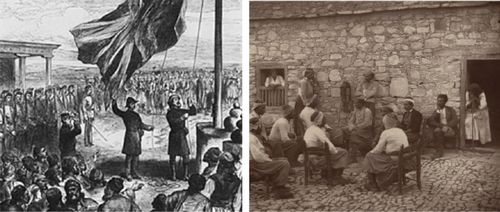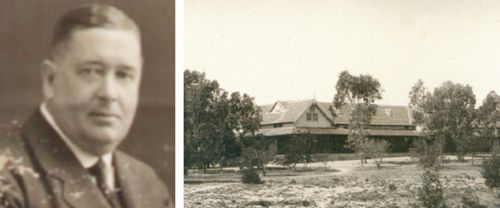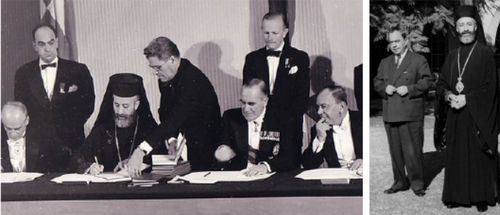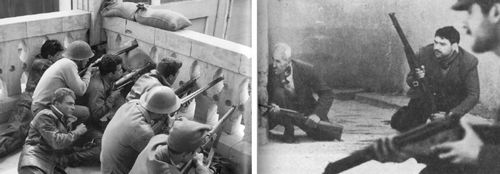British Rule to the Present Day
1878:

The Union Jack is raised in Nicosia and a village scene..........both 1878
Following its war with Russia, the Ottoman Empire had waning influence and is greatly reduced in size.
The Cyprus Convention was a secret deal between Britain and Turkey which agreed that Cyprus would be administered by the British government while remaining under Turkish sovereignty. In return, Britain would protect Turkey's interests against possible Russian aggression.
1906:

The new Famagusta harbour in 1906
A new harbour at Famagusta was completed which increased the importance of Cyprus as a strategic naval outpost protecting the approaches to the Suez Canal and the route to British India.
1914:

The Manchester Regiment arrive in Cyprus 1914........image via: @nathanmorley
Following the outbreak of the First World War, the Ottoman Empire decided to join the war on the side of the Central Powers.
On the 5th November 1914 Britain declared the complete annexation of Cyprus into the British Empire.
1925:

The Governor and his residence
Cyprus is declared a Crown colony, ruled directly by a governor appointed by the monarch.
The first Governor was Sir Malcolm Stevenson who was previously the Chief Secretary of Cyprus and High Commissioner.
1931:

The riots in Nicosia and Government House is burned down
A riot, in favour of union with Greece, resulted in deaths and injuries. British Government House in Nicosia was burned down.
1955:

EOKA fighers in the Troodos mountains and British Troops on the streets
EOKA (National Organisation of Cypriot Fighters) with George Grivas as the leader starts fighting against British Government rule.
Britain sends more troops to combat EOKA.
Archbishop Makarios (the political leader of Greek Cypriots) is forced into exile in the Seychelles.
1960:

The Archbishop signs the treaty and President & Vice President stand together
Under pressure from Greece, Turkey, and NATO, Cyprus becomes an independent state.
There is a Greek Cypriot president, Archbishop Makarios III, and a Turkish Cypriot vice president, Dr Fazıl Küçük.
Two areas of the island are designated as British Sovereign Bases.
1963:

Greek Cypriot and Turkish Cypriot irregulars
Internal conflict between the Greek Cypriot and Turkish Cypriot communities turns into full-fledged armed fighting.

British UN troops on the streets of Limassol and evacuating Turkish Cypriot families
Shortly afterwards, Britain and then the United Nations send peacekeeping forces to the island.
1974:

The Archbishop, his palace and the new President
On the 15th July 1974, a coup organised by the Junta in Greece overthrows (but fails to kill) President Makarios.
A new President, Nikos Sampson, is appointed.

Turkish paratroops, an invasion landing craft and Turkish tanks moving south
Mainland Turkish forces invade Cyprus on the 20th July 1974 and eventually occupy 37% of the island.
The Greek Cypriot town of Varosha (Famagusta) is evacuated.
2016:

A crossing point, the abandoned Varosha and a UN patrol
There are still effectively two states with seven crossing points between them.
The city of Varosha (at the east of the island) is still a ghost town.

Opening a new crossing point, Varosha seen through the fence and a UN observation point
The United Nations Peacekeeping force is beginning its fifty-third year of duty on the island.